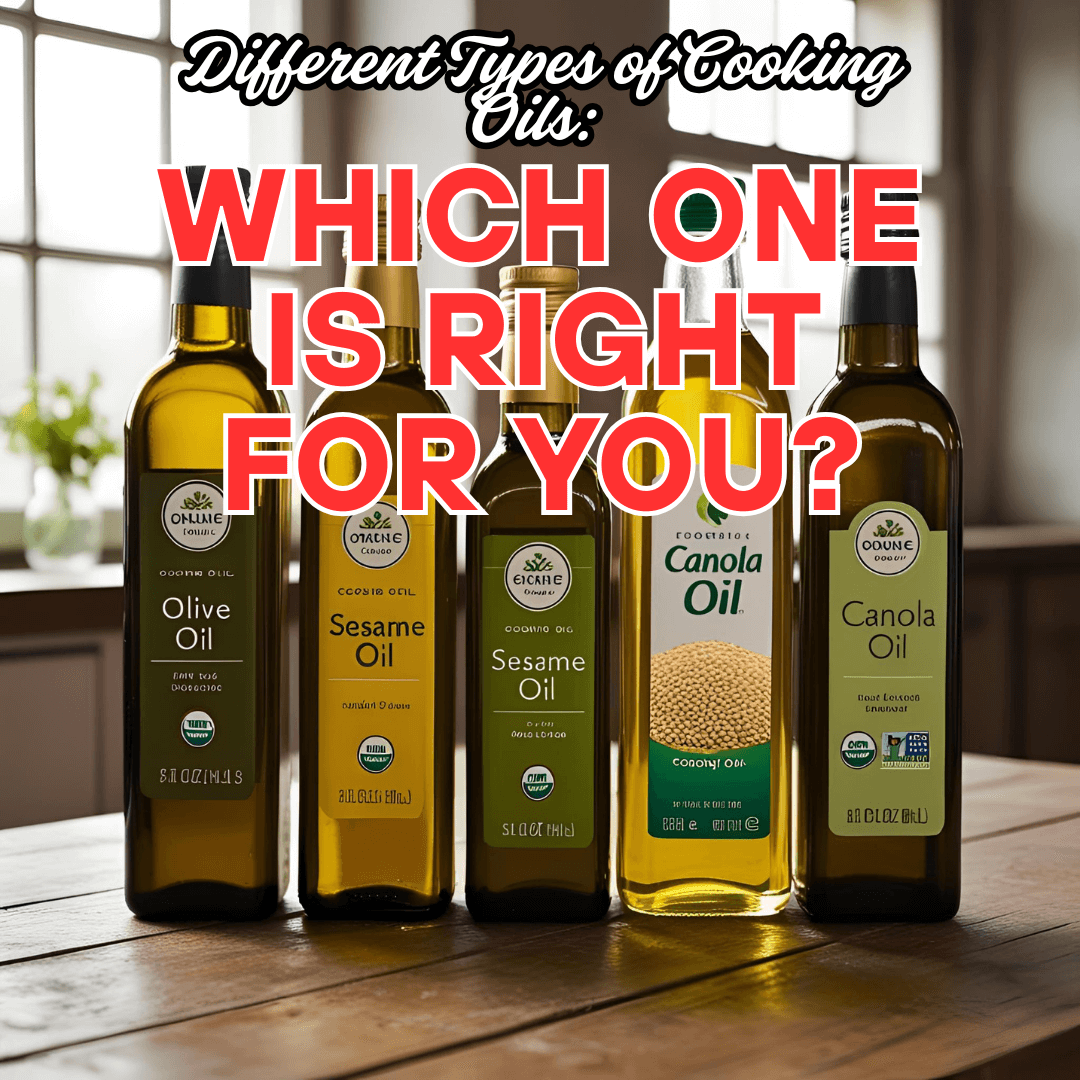When it comes to cooking, the oil you choose can make all the difference. Whether you're frying, sautéing, or baking, the right cooking oil can impact the flavor, texture, and nutritional value of your dish. With so many options available, it can be overwhelming to decide which oil to use for different cooking methods. In this blog post, we'll explore the various types of cooking oils, their health benefits, and when to use them for optimal results.
1. Olive Oil: The Mediterranean Favorite
Olive oil is one of the most popular cooking oils, known for its heart-healthy benefits and rich flavor. It’s a staple in Mediterranean cuisine and is packed with monounsaturated fats, which can help lower bad cholesterol levels. Olive oil is great for sautéing, dressing salads, and drizzling over vegetables.
Best for: Low- to medium-heat cooking, salad dressings, and drizzling over dishes.
Health benefits: Rich in antioxidants, supports heart health, anti-inflammatory properties.
There are different types of olive oil, such as extra virgin olive oil (EVOO) and light olive oil. EVOO is the least processed and has the most flavor and nutrients, making it ideal for drizzling and dressings. Light olive oil, on the other hand, has a milder taste and a higher smoke point, making it suitable for cooking.
2. Canola Oil: The All-Purpose Oil
Canola oil is one of the most commonly used cooking oils due to its neutral flavor and high smoke point. It’s made from the seeds of the canola plant and is often used for frying, baking, and even in some salad dressings. Canola oil is low in saturated fat and high in omega-3 fatty acids, which are beneficial for heart health.
Best for: High-heat cooking like frying, sautéing, and baking.
Health benefits: Rich in omega-3 fatty acids, low in saturated fats.
Despite its health benefits, canola oil is often refined, which can strip some of its nutrients. It’s also a controversial oil due to its origins in genetically modified crops. Opting for organic or non-GMO canola oil can address some of these concerns.
3. Coconut Oil: The Tropical Elixir
Coconut oil has gained popularity in recent years due to its purported health benefits and unique flavor. It contains medium-chain triglycerides (MCTs), which are fats that may help with weight management and provide a quick source of energy. Coconut oil is solid at room temperature, making it perfect for baking or as a substitute for butter in some recipes.
Best for: Baking, frying, and as a butter substitute.
Health benefits: Contains MCTs, which may boost metabolism; antibacterial properties.
However, coconut oil is high in saturated fat, which is why it's best to use it in moderation. Despite the hype, experts recommend using it sparingly and balancing it with other oils.
4. Avocado Oil: The Healthy All-Rounder
Avocado oil is another excellent choice for cooking, especially when you want something versatile and rich in nutrients. It has a high smoke point, making it ideal for grilling, sautéing, and frying. Avocado oil is packed with monounsaturated fats and vitamin E, which help nourish the skin and improve heart health.
Best for: High-heat cooking, dressings, and marinades.
Health benefits: High in monounsaturated fats, rich in antioxidants, promotes heart health.
The mild flavor of avocado oil also makes it a good choice for salads and dressings, providing a healthy alternative to traditional oils.
5. Peanut Oil: The Fryer’s Favorite
Peanut oil, also known as groundnut oil, is often used in deep frying due to its high smoke point. It has a mild flavor that doesn’t overpower the taste of food, making it a favorite in Asian cuisine, particularly for stir-frying and frying dishes like tempura.
Best for: Deep frying, stir-frying, and grilling.
Health benefits: Rich in vitamin E and antioxidants.
Because it has a high level of omega-6 fatty acids, it’s important to balance peanut oil consumption with other oils. If you have a peanut allergy, be cautious, as this oil could trigger an allergic reaction.
6. Ghee: The Clarified Butter
Ghee, or clarified butter, is commonly used in Indian and Middle Eastern cuisine. It’s made by heating butter to remove the milk solids, which results in a rich, nutty flavor and a higher smoke point. Ghee is lactose-free and has been praised for its digestive benefits and high levels of conjugated linoleic acid (CLA), a healthy fat that may help with weight loss.
Best for: Sautéing, frying, and as a topping for dishes like rice or vegetables.
Health benefits: Lactose-free, contains CLA, rich in butyrate (which supports gut health).
Ghee is versatile and can be used in many dishes, especially for people who have dairy sensitivities or prefer a more flavorful alternative to oils.
7. Sunflower Oil: The Mild and Versatile Choice
Sunflower oil is a mild-flavored oil that is commonly used for frying and baking. It’s a good source of vitamin E and has a high smoke point, making it suitable for high-heat cooking methods. Sunflower oil comes in different varieties, such as high-oleic sunflower oil, which is higher in monounsaturated fats and better for heart health.
Best for: Frying, baking, and making salad dressings.
Health benefits: Rich in vitamin E and antioxidants, supports heart health.
Sunflower oil is a good all-purpose oil, but its high omega-6 content means it’s best used in moderation, particularly when combined with other healthy oils.
8. Sesame Oil: The Flavorful Option
Sesame oil is widely used in Asian cuisine, especially in stir-fries, marinades, and dressings. It comes in two types: light sesame oil (made from raw seeds) and toasted sesame oil (made from roasted seeds). The toasted variety has a rich, nutty flavor and is typically used for seasoning, while light sesame oil has a neutral flavor and a high smoke point, making it suitable for cooking.
Best for: Stir-frying, seasoning, and dressings.
Health benefits: Rich in antioxidants, supports bone health.
Sesame oil’s distinct flavor can elevate your dishes, but it’s best used in moderation to avoid overpowering the food.
With so many different types of cooking oils available, it’s essential to choose the one that suits your cooking style, flavor preferences, and health goals. Whether you’re looking for heart-healthy options like olive oil or avocado oil, or seeking the perfect oil for frying like peanut or sunflower oil, each oil has its unique benefits and uses. Remember to balance your oil intake and use them in moderation for the best health outcomes. Happy cooking!





